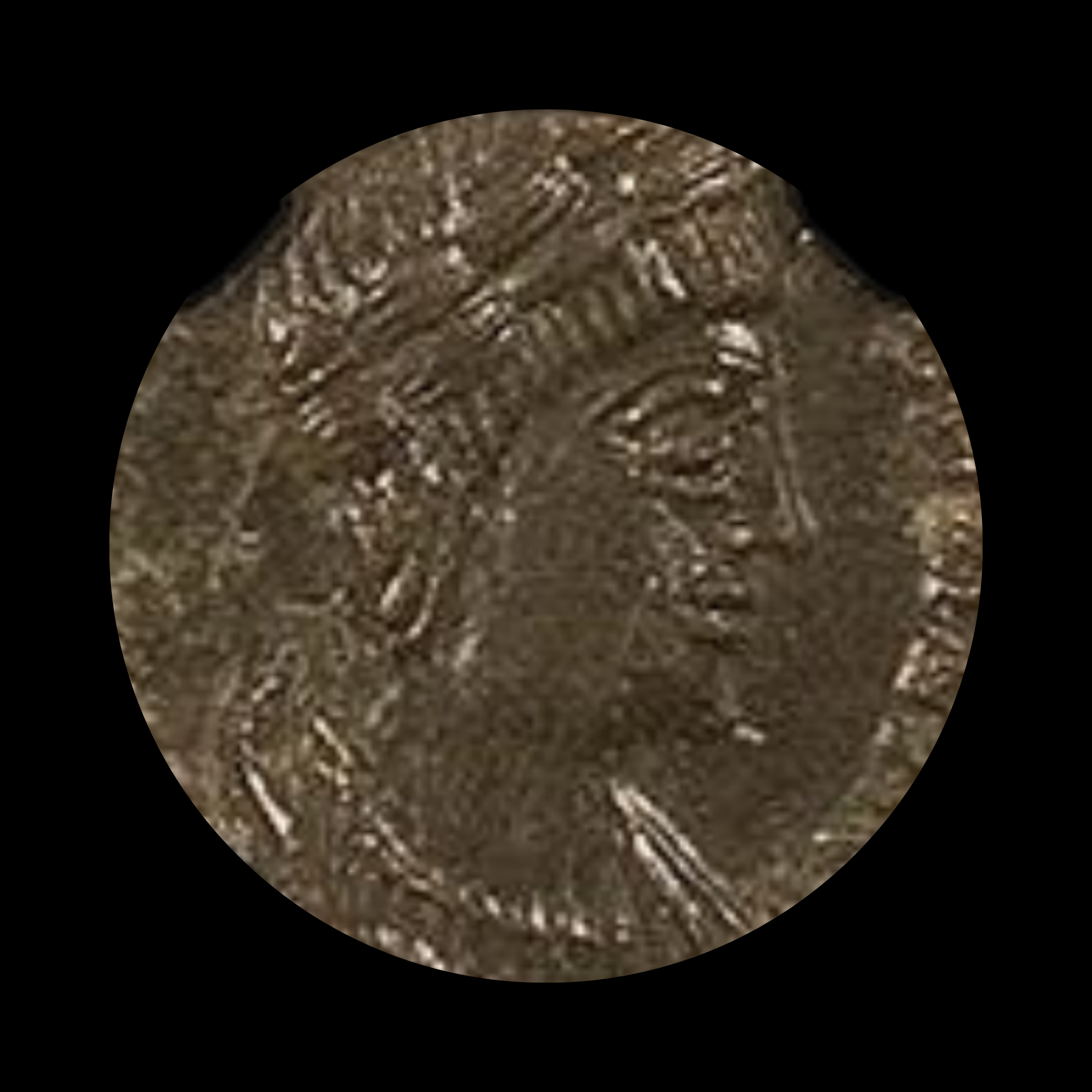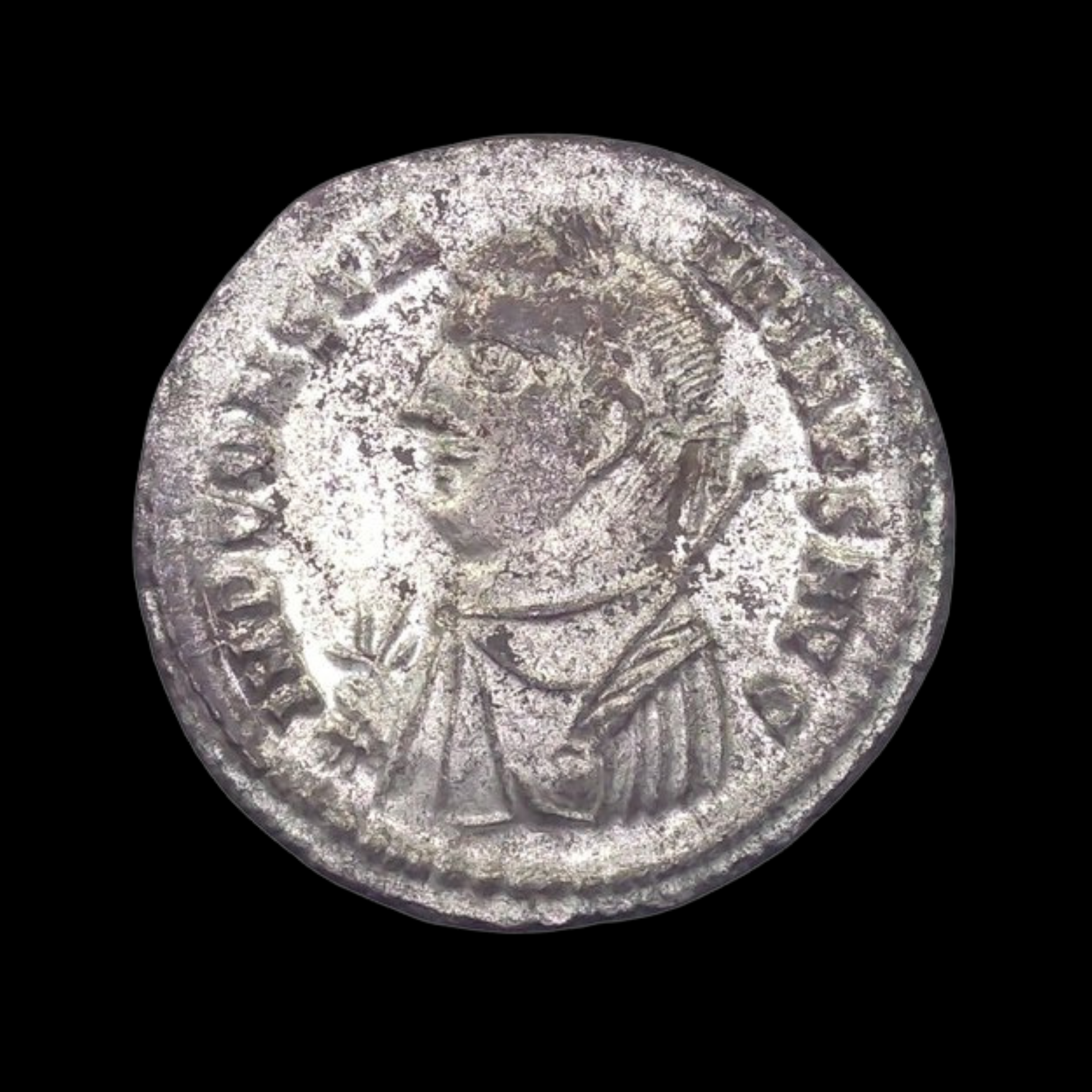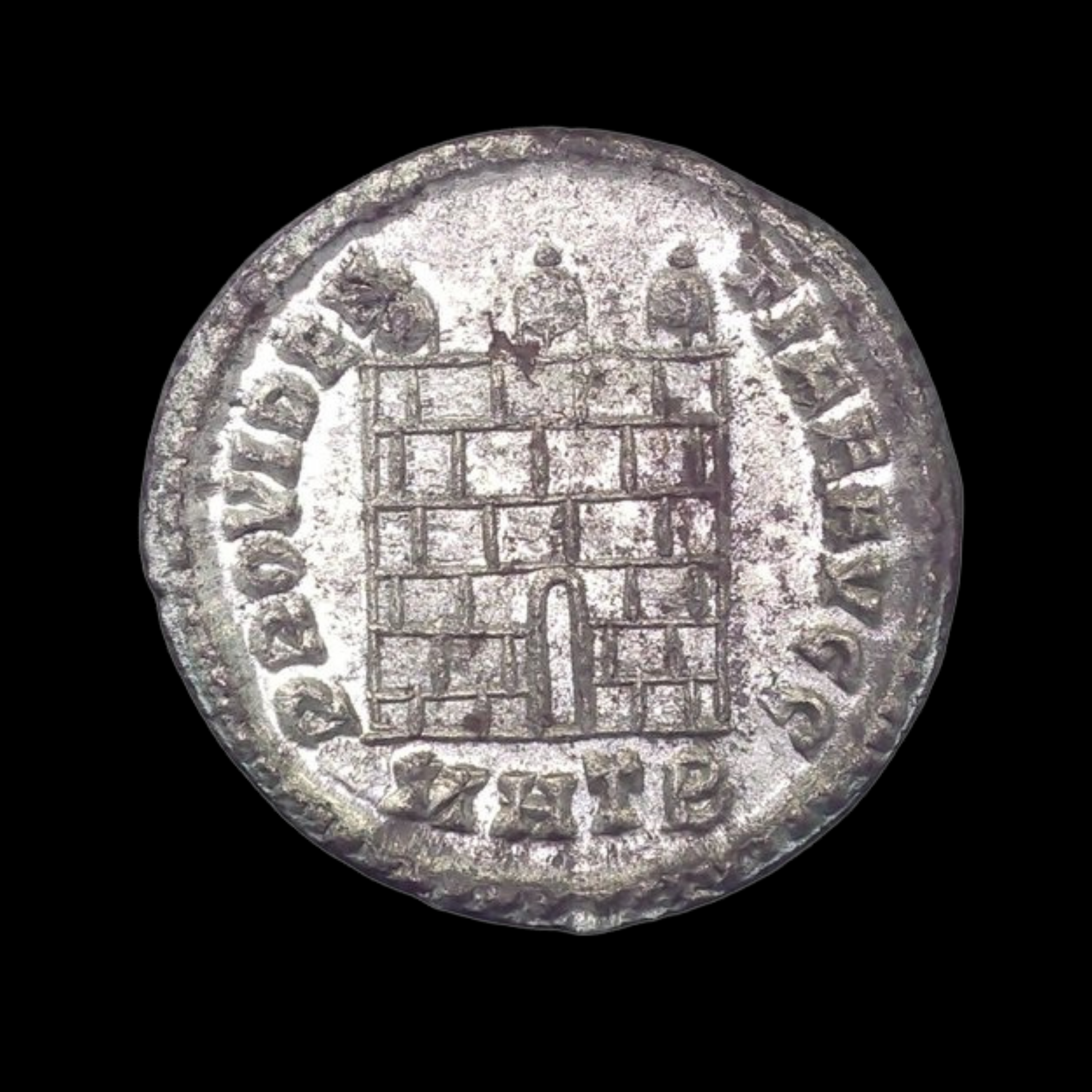 Image 1 of 6
Image 1 of 6

 Image 2 of 6
Image 2 of 6

 Image 3 of 6
Image 3 of 6

 Image 4 of 6
Image 4 of 6

 Image 5 of 6
Image 5 of 6

 Image 6 of 6
Image 6 of 6







Roman Bronze Coin of Flavia Maximiana Theodora (about 1,720-1,730 years ago)
This bronze coin features Flavia Maximiana Theodora, who was the wife (or possibly stepdaughter) of Emperor Constantius I Chlorus during the late 3rd and early 4th centuries CE. As a member of the imperial family during the Tetrarchy period, her coinage represents the growing importance of imperial women in late Roman political imagery.
Coin Description:
Front side: Portrait of Theodora facing right, likely depicted with an elaborate hairstyle common for imperial women, possibly wearing a diadem, with her name and titles in Latin around the edge.
Back side: Probably features personifications of imperial virtues such as Pietas (Piety), Salus (Health/Welfare), or possibly a standing female figure representing peace or prosperity.
Technical Details:
Bronze alloy composition
Denomination: Likely an AE follis or fractional denomination
Weight: Approximately 2-4 grams
Diameter: Approximately 18-22 mm
NGC Certified for authentication and preservation
Minted likely between 306-337 CE (posthumous issues after Constantius I's death)
Condition as specified by NGC certification
Historical Significance: Theodora's historical importance lies in her connection to the Constantinian dynasty as wife to Constantius I Chlorus (who served as Caesar and later Augustus in the Tetrarchic system). She was mother to several children including Constantius II, establishing a dynastic line that would dominate Roman politics for decades. Her coins were likely issued posthumously to emphasize dynastic legitimacy during Constantine the Great's reign. This coin represents the increasing visibility of imperial women on Roman coinage, reflecting their growing political influence during the late empire as guarantors of dynastic continuity.
This bronze coin features Flavia Maximiana Theodora, who was the wife (or possibly stepdaughter) of Emperor Constantius I Chlorus during the late 3rd and early 4th centuries CE. As a member of the imperial family during the Tetrarchy period, her coinage represents the growing importance of imperial women in late Roman political imagery.
Coin Description:
Front side: Portrait of Theodora facing right, likely depicted with an elaborate hairstyle common for imperial women, possibly wearing a diadem, with her name and titles in Latin around the edge.
Back side: Probably features personifications of imperial virtues such as Pietas (Piety), Salus (Health/Welfare), or possibly a standing female figure representing peace or prosperity.
Technical Details:
Bronze alloy composition
Denomination: Likely an AE follis or fractional denomination
Weight: Approximately 2-4 grams
Diameter: Approximately 18-22 mm
NGC Certified for authentication and preservation
Minted likely between 306-337 CE (posthumous issues after Constantius I's death)
Condition as specified by NGC certification
Historical Significance: Theodora's historical importance lies in her connection to the Constantinian dynasty as wife to Constantius I Chlorus (who served as Caesar and later Augustus in the Tetrarchic system). She was mother to several children including Constantius II, establishing a dynastic line that would dominate Roman politics for decades. Her coins were likely issued posthumously to emphasize dynastic legitimacy during Constantine the Great's reign. This coin represents the increasing visibility of imperial women on Roman coinage, reflecting their growing political influence during the late empire as guarantors of dynastic continuity.
This bronze coin features Flavia Maximiana Theodora, who was the wife (or possibly stepdaughter) of Emperor Constantius I Chlorus during the late 3rd and early 4th centuries CE. As a member of the imperial family during the Tetrarchy period, her coinage represents the growing importance of imperial women in late Roman political imagery.
Coin Description:
Front side: Portrait of Theodora facing right, likely depicted with an elaborate hairstyle common for imperial women, possibly wearing a diadem, with her name and titles in Latin around the edge.
Back side: Probably features personifications of imperial virtues such as Pietas (Piety), Salus (Health/Welfare), or possibly a standing female figure representing peace or prosperity.
Technical Details:
Bronze alloy composition
Denomination: Likely an AE follis or fractional denomination
Weight: Approximately 2-4 grams
Diameter: Approximately 18-22 mm
NGC Certified for authentication and preservation
Minted likely between 306-337 CE (posthumous issues after Constantius I's death)
Condition as specified by NGC certification
Historical Significance: Theodora's historical importance lies in her connection to the Constantinian dynasty as wife to Constantius I Chlorus (who served as Caesar and later Augustus in the Tetrarchic system). She was mother to several children including Constantius II, establishing a dynastic line that would dominate Roman politics for decades. Her coins were likely issued posthumously to emphasize dynastic legitimacy during Constantine the Great's reign. This coin represents the increasing visibility of imperial women on Roman coinage, reflecting their growing political influence during the late empire as guarantors of dynastic continuity.
Flavia Maximiana Theodora (died before 337) was a Roman empress as the wife of Constantius Chlorus.
She is often referred to as a stepdaughter of Emperor Maximian by ancient sources, leading to claims by historians Otto Seeck and Ernest Stein that she was born from an earlier marriage between Eutropia, wife of Maximian, and Afranius Hannibalianus.[1][2] This man was consul in 292 and praetorian prefect under Diocletian.[3]
Timothy Barnes challenges this view, arguing that all "stepdaughter sources" derive their information from the hypothetical 4th century Enmannsche Kaisergeschichte, which Barnes considers unreliable, while sources he considers to be more reliable refer to Theodora as Maximian's daughter, rather than his stepdaughter.[1] He concludes that she was born to an earlier wife of Maximian, possibly one of Hannibalianus's daughters.[4] Although Julia Hillner agreed with the idea of Theodora being Maximian's biological daughter, she also observed that Barnes' theory does not explain why one of Theodora's daughters was named Eutropia. She believes that Theodora was the daughter of both Maximian and Eutropia. She agrees with Barnes that the "stepdaughter sources" are the result of later Constantinian propaganda, but argues that Afranius was instead Eutropia's brother, thus explaining why Theordora named one of her daughter Eutropia, and one of her sons Hannibalianus.[5]

















